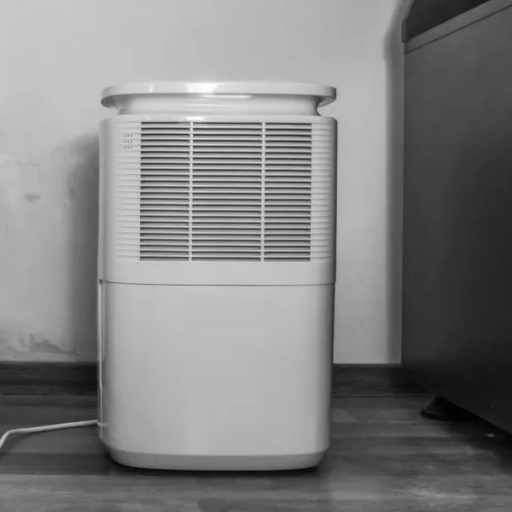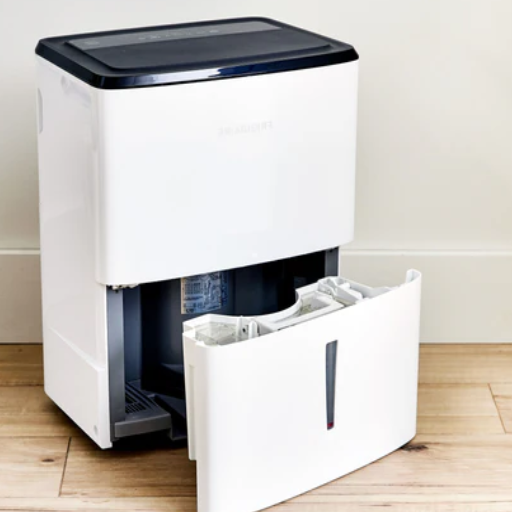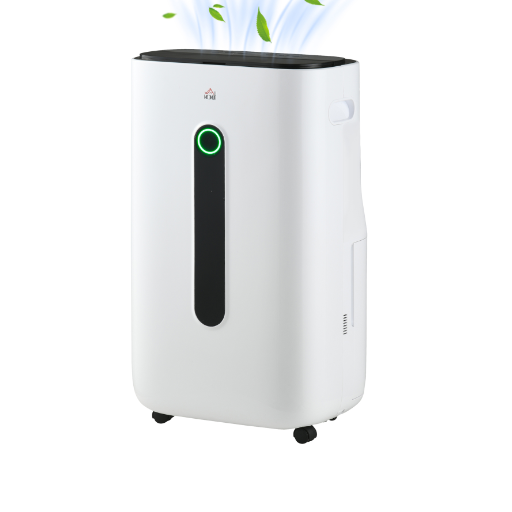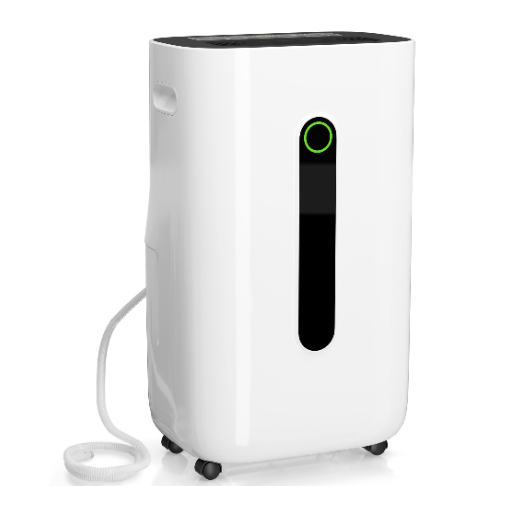How Do Dehumidifiers Work?

The Science Behind Dehumidification
A dehumidifier extracts the extra moisture from the air through a simple process:
- A fan draws the room air into the dehumidifier
- Air passes over cold coils, chilling the moisture into water droplets
- Water is collected in a reservoir or drained out
- Drier air is reheated and sent back into the room
For optimal performance, dehumidifiers should maintain indoor humidity at about 50%, which is generally comfortable and deters mold growth. Regular maintenance, including emptying the water reservoir and cleaning filters, helps maintain peak performance.
Understanding Humidity and Mold Growth
Mold requires moisture and warmth to thrive, making humidity essential for its development. Mold spores are always present in the air, but they develop into visible colonies when specific conditions are met.
Optimal Humidity Conditions
| Humidity Level | Mold Risk | Recommended Action |
|---|---|---|
| Above 60% | High Risk | Use a dehumidifier immediately |
| 50-60% | Moderate Risk | Monitor closely, consider a dehumidifier |
| 30-50% | Low Risk | Ideal range – maintain current conditions |
| Below 30% | No Risk | May be too dry for comfort |
Prevention Strategies
- Maintain humidity between 30-50%
- Use dehumidifiers in problem areas
- Ensure adequate ventilation systems
- Repair any water leakage promptly
- Improve drainage around the home
- Monitor humidity levels with a hygrometer
Can a Dehumidifier Help with Mold Prevention?

Reducing Moisture to Combat Mold and Mildew
Dehumidifiers work in tandem with mold control by maintaining indoor relative humidity at the optimum range of 30-50%. They remove excess moisture that would otherwise become conducive to mold and mildew formation.
How Dehumidifiers Eliminate Mold Spores
Dehumidifiers are critical mold spore fighters by:
- Creating unfavorable conditions for mold growth
- Preventing spores from settling on surfaces
- Reducing the ability of spores to reproduce
- Protecting high-risk areas before problems occur
Advanced dehumidifiers now include filters that capture dust, allergens, and mold spores, further purifying the air.
Benefits of Using a Dehumidifier for Air Quality
Excess moisture creates ideal conditions for mold and mildew. Dehumidifiers lower humidity to prevent mold formation on walls, ceilings, and furniture. The EPA recommends keeping indoor humidity between 30-50%.
Humid environments support allergens like dust mites and mold spores. Dehumidifiers reduce airborne allergens, providing relief for people with asthma or chronic sinus problems.
Dehumidifiers create better conditions for clean breathing by combating damp air and airborne particles. Extended exposure to mold and high humidity can cause respiratory health issues.
High moisture levels create musty and unpleasant smells, particularly in basements and storage rooms. Dehumidifiers remove humidity and associated odors, enhancing your home’s ambiance.
Humidity can cause wooden furniture, floors, and structural components to warp, rot, or swell. Dehumidifiers protect valuable belongings and extend the life of building materials.
Choosing the Right Dehumidifier
Factors to Consider: Size and Type
| Room Size | Recommended Capacity | Best Use |
|---|---|---|
| Small (bathrooms, closets) | 20-30 pint | Spot treatment |
| Medium (bedrooms) | 40-50 pint | Single room coverage |
| Large (basements, living areas) | 50-70 pint | Whole area coverage |
Types of Dehumidifiers
- Refrigerant (Compressor-based): Best for warmer, humid environments
- Desiccant: Ideal for colder environments, quieter but less energy-efficient
Recommended Features for Mold Prevention
- High tank capacity or continuous drainage option
- Built-in hygrometer for humidity monitoring
- Automatic shutoff feature
- Adjustable humidity control
- Timer function for convenience
- Air filtration system
- Smart connectivity with Wi-Fi capability
- Energy Star rating for efficiency
Optimal Placement of Dehumidifiers

Strategic Locations in Your Home
| Location | Why It’s Important | Placement Tips |
|---|---|---|
| Basement | Below grade level, prone to condensation | Center of room, away from obstructions |
| Bathroom | High moisture from showers | Near the shower area, ensure ventilation |
| Laundry Room | Steam from washing machines | Close to a moisture source |
| Living Areas | Poor ventilation, exterior moisture | Near windows or exterior walls |
Best Practices for Basement Dehumidification
- Seal cracks or leaks in the foundation and walls
- Maintain relative humidity between 30-50%
- Clean or replace filters regularly
- Place the unit away from walls for better air circulation
- Choose an appropriate capacity for the basement size
- Consider the continuous drain option
- Use ventilation systems like exhaust fans
- Install a sump pump if water seepage is severe
Maintenance Tips for Long-Term Use

Essential Maintenance Tasks
| Task | Frequency | Importance |
|---|---|---|
| Clean filters | Every 2 weeks | Maintains airflow and efficiency |
| Empty water tank | When full | Prevents overflow and damage |
| Clean coils | Monthly | Ensures proper heat exchange |
| Check the drainage system | Monthly | Prevents clogs and backups |
| Inspect for wear | Quarterly | Identifies potential issues early |
Signs Your Dehumidifier Needs Maintenance
- Performance Issues: Not removing moisture effectively
- Strange Noises: Rattling, grinding, or buzzing sounds
- Higher Energy Bills: Inefficient operation
- Frequent Cycling: Turning on and off more than usual
- Condensation: Build-up on the outside of the unit
- Strange Odors: Musty or unusual smells
- Water Leakage: Visible water around the unit
Frequently Asked Questions (FAQ)
Key Takeaways
- Maintain humidity levels between 30-50% for optimal mold prevention
- Choose the right size dehumidifier for your space
- Regular maintenance is essential for long-term effectiveness
- Combine dehumidification with proper ventilation and leak repair
- Monitor humidity levels with a hygrometer
- Address existing mold issues before relying solely on dehumidification




